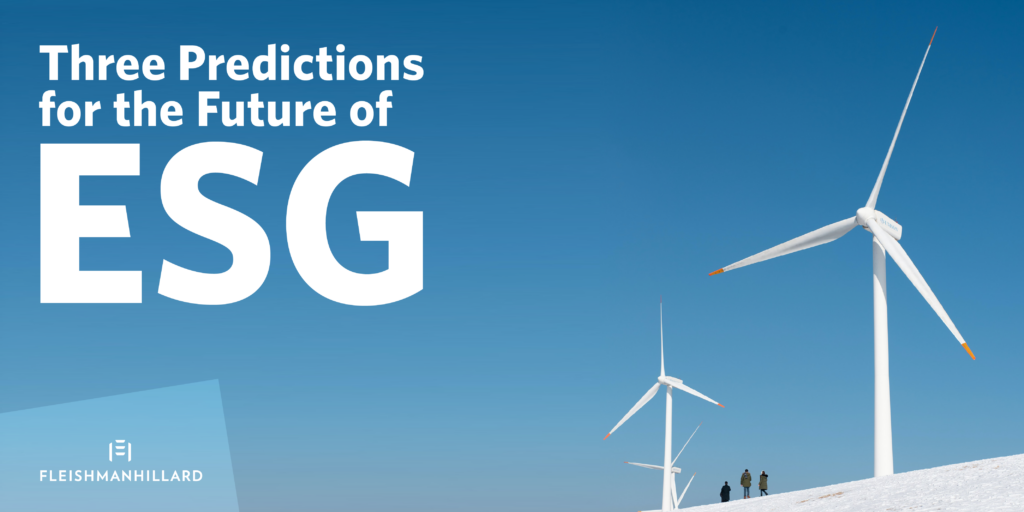Three Predictions for the Future of ESG
The kids are back in school, pumpkin spice lattes are widely available at coffeeshops across North America and Europeans have returned from their summer holidays. As we settle into the rhythm of this new season, now is the right time for Environment, Social and Governance (ESG) leaders to begin crafting communications strategies for 2023.
Each year, pundits comment that the stakes for ESG “have never been higher.” While this statement is cliché, it holds true. Here are three insights ESG leaders should keep in mind as they initiate planning for the new year.
‘Showing Your Receipts’ Can Help Brands Differentiate Themselves as we Race Collectively Toward Net Zero
It wasn’t long ago that a brand announcing their intention to align with a net zero commitment was a newsworthy event. Now that over a fifth of the world’s largest companies have shared net zero commitments, corporate pledges to tackle the worst outcomes associated with climate change have become table stakes. In the past two years, reporters focused on environmental sustainability have become less interested in pitches about new private sector climate goals.
So, what is driving news? As the private sector rushes toward net zero, pitches that highlight the progress brands are seeing and the creative solutions others can leverage are becoming increasingly resonate. Radically transparent, externally-facing progress reports that provide visibility into ways brands are building unexpected partnerships to address industry-wide issues could be a way to cut through the noise in the new year.
Enhancing ESG Disclosures Now Will Help Brands Prepare for New SEC Requirements
In May 2022, the SEC issued a new proposal for climate-related disclosure rules designed to increase transparency and make it easier for investors to navigate and compare ESG claims. For publicly traded companies in the food and agriculture sector, a significant part of the disclosure requirements will be the mandate that brands over a certain revenue threshold who have set targets around carbon emissions disclose Scope 3 emissions when these emissions are material.
The comment period recently closed and – while details are still being finalized – it seems evident that new standards which will better align the U.S. approach with European markets will be enacted by 2024. Recognizing the intricate value chains endemic to the food and agriculture sector, now is the time for B2B brands to put into place necessary structures to report these emissions to customers and for CPG brands to start the process of requesting emissions data from suppliers and working with their Chief Financial Officers to ensure these reports are externally validated and held to a level of scrutiny required for inclusion in an annual 10-K. Instituting these practices before disclosure requirements are officially handed down could provide points of distinction amongst competitors and even an opportunity for thought leadership. Why wait to share, but also why stop at reporting? Sharing the story behind the numbers can also differentiate companies in a crowded conversation.
Leaning into the Intersections Between Business and Environmental Goals will Help Brands Best Serve Customers
Innova Market Insights’ top trend for 2022 was the concept of Shared Planet. Innova reports that 44% of global consumers indicate sustainability is extremely or very important when it comes to their diet and notes a +121% year-over-year growth of on-pack carbon footprint and reduced emissions communication in food and beverage launches.
As consumers increasingly cite the health of the planet as one of their top concerns, linking ESG initiatives with business objectives will become vitally important to maintaining or increasing market share. ESG must be viewed as part of both broader business and communications strategies and not as a discrete initiative.
While the ESG landscape has never seen higher stakes, strong business opportunities exist for brands that are willing to think creatively about how they can show up differently as we work together for a more sustainable future. A willingness to prioritize transparency and unexpected partnerships and continued efforts to align ESG with business goals can make all the difference for brands in the food and agriculture industries.

